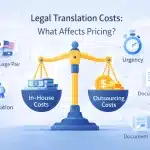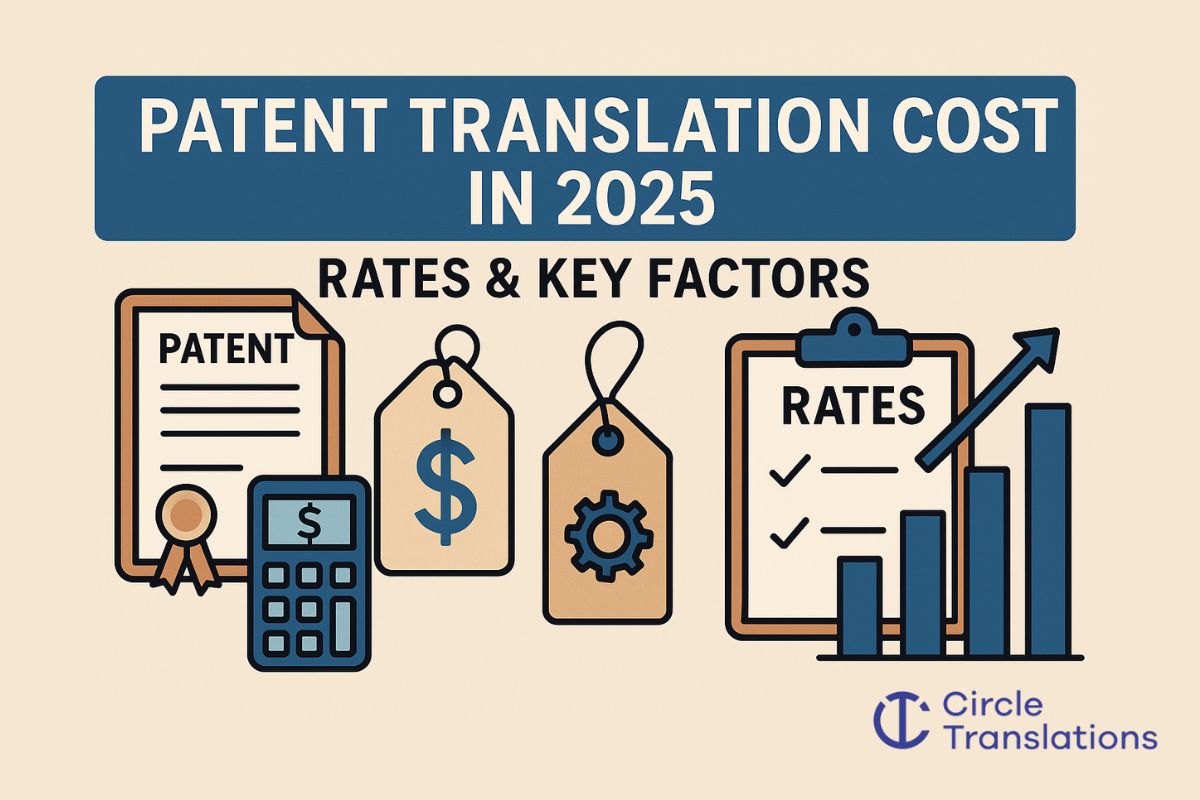In the non-stop world of video content, the definition of subtitling is helping people understand videos, regardless of where they’re from or if they have hearing impairments. Subtitles aren’t just words on the screen; they’re a bridge to a digital audience. They make your content accessible, inclusive, and more engaging. Whether you’re a YouTuber, filmmaker, or content creator, mastering subtitling is like unlocking the universal language of video. Let’s dive into this handbook to explore the art and science of subtitling, making your videos resonate with people all around the world.
What are the principles of subtitling?
Effective subtitling follows essential principles to enhance accessibility and viewer engagement. These principles include synchronization, readability, conveying emotions, and minimizing distractions.
- Synchronization: Subtitles must sync with the audio. They should appear and disappear at the right moments to match what’s being said. This ensures that viewers can read along without missing any dialogue.
- Readability: Subtitles should be easy to read. They need clear, legible fonts, accurate sizes, and a good color contrast against the background. This ensures that everyone, including those with visual impairments, can follow the content.
- Timing: Proper timing is crucial. Subtitles should be on screen long enough to be read comfortably but not linger too long after the dialogue has moved on.
- Context: Subtitles should provide context, especially for off-screen sounds, speaker identification, and critical background information. This aids understanding, making the content more accessible.
- Conveying Emotions: Effective subtitling conveys emotions and tone. It’s not just about the words but also how they’re portrayed. This increases the viewer’s experience and makes them feel more relevant to the content.
- Minimizing Distractions: Subtitles should blend into the content rather than diverting from it. Avoiding excessive formatting ensures that viewers can focus on the story.
What is the difference between translating and subtitling?
Translating and subtitling are distinct but interconnected processes. Translation primarily caters converting words from one language to another, with the aim of delivering the same meaning. Subtitling, however, goes beyond mere language translation; it’s a creative process that adds an extra layer of twist.
Subtitling services require not only linguistic expertise but also a deep understanding of the cultural context, timing, and visual constraints. Subtitlers must consider factors like reading speed and screen space, ensuring that the subtitles are legible and don’t overwhelm the viewer in the long run.
Moreover, subtitlers must make decisions about phrasing and tone to capture the essence of the original dialogue. This includes adapting jokes, idiomatic expressions, and nuances to resonate with the target audience. For instance, a character saying “I’m starving” might be better subtitled as “I’m famished” to match the context and tone.
Cultural sensitivity plays a crucial role in subtitling. It involves bridging the gap between languages while preserving the authenticity of the source material. Therefore, subtitlers are like cultural ambassadors, responsible for conveying the emotions and messages of a film or show in a way that feels natural and relatable to the viewers.
Types of subtitling
As we all know that subtitles come in different flavors to suit diverse needs. “Open subtitles” are always visible on the screen and can’t be turned off. They’re great for language learners and when the audience can’t hear the audio.
- “Closed subtitles” can be toggled on or off by the viewer. They’re handy for giving everyone a choice and are commonly used in TV shows and movies.
- “Live subtitles” are created in real-time, often for live broadcasts or events. They help people with hearing impairments follow the content.
Choosing the right subtitle type is vital. Open subtitles make content accessible but might clutter the screen. Additionally, closed subtitles offer flexibility and live subtitles ensure inclusivity during live events. So, it’s crucial to think about your audience and content when picking the right subtitle type. Making the right choice ensures that everyone can enjoy and understand the content.
What to consider when subtitling?
Subtitling services is a vital part of making content accessible to a global audience. When creating subtitles, two essential factors to consider are context and cultural relevance.
- Context: It’s crucial to understand the context of the scene, including emotions, tone, and background information. This ensures that the subtitles accurately convey the intended message and feelings to the viewers.
- Cultural Relevance: Each culture boasts distinct expressions, humor, and idioms that encapsulate their essence. To effectively reach the target audience, subtitles must be carefully modified to make the content relatable and interesting as well as easy to grasp. An effective adaptation captures the essence of the culture, allowing viewers to empathize more deeply with the characters and plot.
Moreover, a well-written subtitle may bridge the gap between languages and promote a sense of inclusivity through humor, emotion, or even wordplay, enhancing the viewing experience and making it thrilling but unforgettable for the audience.
Choosing the Right Translation Company: Picking the right translation company is essential. Look for one with experience in subtitling to ensure quality and accuracy. A reputable company will have skilled translators who understand the nuances of both languages and cultures, leading to better subtitles.
What is the benefit of subtitles?
Subtitles offer various benefits, making video content more accessible and engaging for everyone.
- Accessibility: Subtitles help the deaf and hard of hearing understand spoken content. This inclusion is essential, as about 5% of the world’s population has disabling hearing loss.
- Language Adaptation: Subtitles allow videos to be enjoyed by a global audience. Viewers can read translations or subtitles in their preferred language, breaking down language barriers.
- Improved Engagement: Studies show that videos with subtitles have longer watch times and better viewer retention. People find it easier to follow and comprehend the content, making it more engaging.
- SEO Boost: Search engines can’t watch videos, but they can read subtitles. Adding subtitles to your content improves its discoverability and search engine ranking.
For instance, a study by PLYmedia found that adding subtitles to videos increased view time by 40%. Embracing subtitles benefits both creators and viewers.
Subtitle file formats
Subtitle files, like captions, play a vital role in video content. Three prevalent subtitle formats are SRT, VTT, and SSA.
- SRT (SubRip):
This format is simple and widely compatible, making it a solid choice for most situations. It includes text and timestamps to sync with video.
- VTT (WebVTT):
It is designed for web-based videos, VTT files contain text and timestamps. They work seamlessly with online platforms and are user-friendly.
- SSA (SubStation Alpha):
SSA is an advanced format with extensive formatting options like fonts and vibrant colors. It provides more control but can be complex to work with.
How to do subtitling?
Subtitling is an essential skill for making videos accessible and engaging to a broader audience. To create high-quality subtitles, follow these steps:
- Timing: Start by determining the timing of each subtitle. Subtitles should appear and disappear at a pace that matches the spoken words. Use subtitling software, which usually allows you to time subtitles precisely.
- Placement: Subtitles should be placed at the bottom of the screen, avoiding any important visual elements. Ensure they are easy to read and do not obstruct the viewer’s view.
- Style: Use clear and legible fonts, like Arial or Helvetica. The text should contrast with the background and be large enough to read comfortably. Aim for a maximum of two lines per subtitle and around 35-40 characters per line for easy readability.
- Accuracy: Transcribe the spoken words accurately. Ensure that the subtitles reflect the tone and context of the video. Be mindful of slang, accents, or jargon that may require adaptation for clarity.
- Readability: Subtitles should be concise and easy to follow. Avoid overcrowding the screen with text. If a sentence is too long, split it into two subtitles.
- Quality Control: After creating subtitles, review and edit them for any errors. Check for spelling, grammar, and timing issues. Ensure the subtitles are synchronized with the audio.
- Testing: Always preview the subtitled video to ensure the timing, placement, and style are appropriate. Make adjustments as needed.
- Feedback: If possible, get feedback from viewers or colleagues to improve the overall quality of your subtitles.
Legal and copyright considerations
When diving into the world of subtitle creation, understanding legal and copyright matters is vital. It’s like the compass that guides your journey. Adding subtitles to videos without permission can stir up significant legal troubles. Imagine it as entering into someone else’s shoes without their consent. To keep things on the right way, always ensure you have the proper authorization, especially for content that isn’t yours. When in confusion, don’t hesitate to seek permission. Think of it as waiting for the green light at an intersection – it keeps you on the secure side of the law.
Conclusion
Mastering Subtitling: A Complete Handbook for Video Content Creators is a valuable resource for anyone looking to enhance their video content. This comprehensive guide offers practical insights, making subtitling more accessible and effective. It covers essential aspects such as timing, readability, and cultural sensitivity, ensuring your subtitles engage a wider audience. By mastering this skill, you can improve viewer experience, accessibility, and global reach. Whether you’re a beginner or a pro, this handbook empowers you to create captivating subtitles that truly connect with your audience, enhancing the impact of videos.
FAQs
- How can I ensure that my subtitles are inclusive and culturally relevant for a global audience?
To ensure inclusive and culturally relevant subtitles for a global audience, hire diverse professionals, use accurate translations, and adapt to local norms and sensitivities.
- What is the best subtitle file?
The best subtitle file format is SRT (SubRip) subtitle file format due to its broad compatibility and user-friendly nature, making it a top pick for adding subtitles to videos and films among the viewers.
- Do videos with subtitles get more views?
Videos with subtitles can potentially garner more views since they cater to a diverse audience, encompassing people with hearing difficulties, non-native language speakers, and those watching in noisy settings, enhancing accessibility and engagement.
- What is the process of subtitling?
The process of subtitling mainly entails transcribing spoken dialogue, translating if necessary, and aligning text with video timing. Additionally, employ specialized software or skilled professionals to ensure precision and efficiency in this creative process.
Subtitles

Professional and Accurate Subtitle Services for your Videos.
- Video subtitles specifically tailor-made for improving accessibility.
- Using highly experienced subtitlers with years of industry experience.
- Professionally written and expertly timed.
Translation

We help the world’s top companies translate their content in over 73 languages!
- We localize content for internet websites, games, travel, cryptocurrencies, and more
- Expand your global audience by adding different languages.
- We work only with qualified translators and experienced content creators
Audio translation

Ensuring full accessibility for Blind and visual impaired audiences.
- Visual descriptive events as they occur in the video.
- Working with top audio describers to perfectly describe what is happening on-screen
- Professional sound recording.














